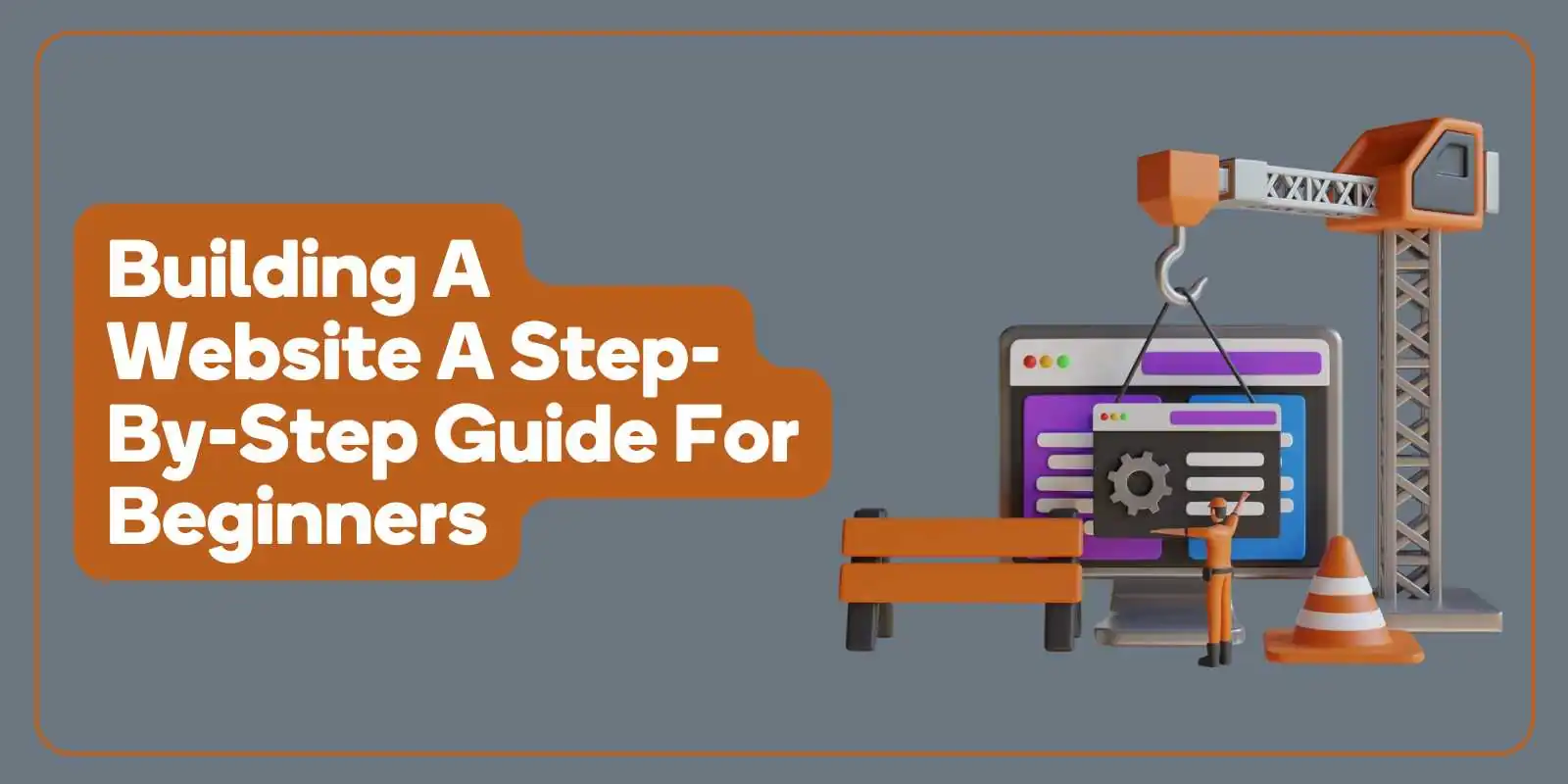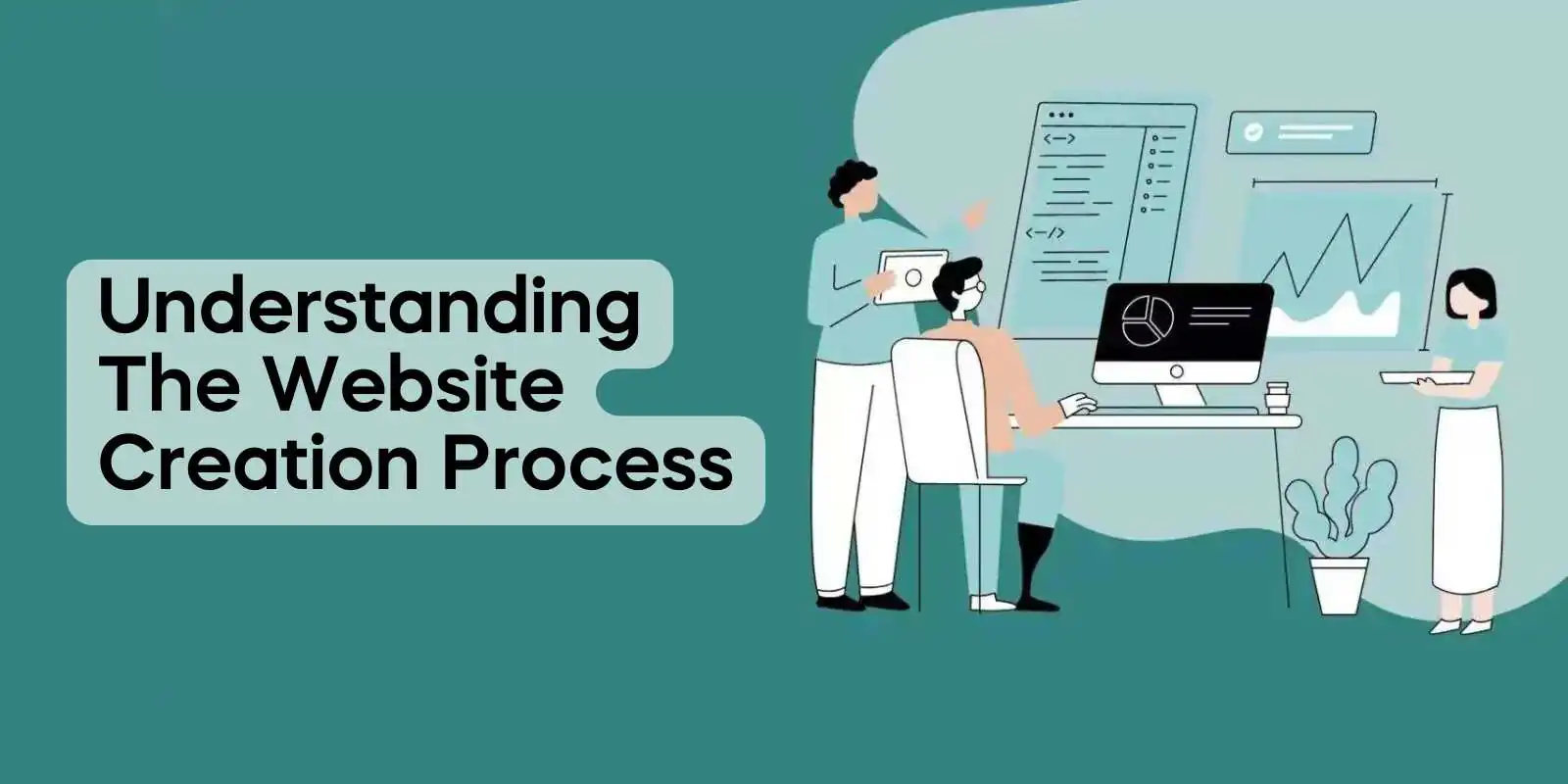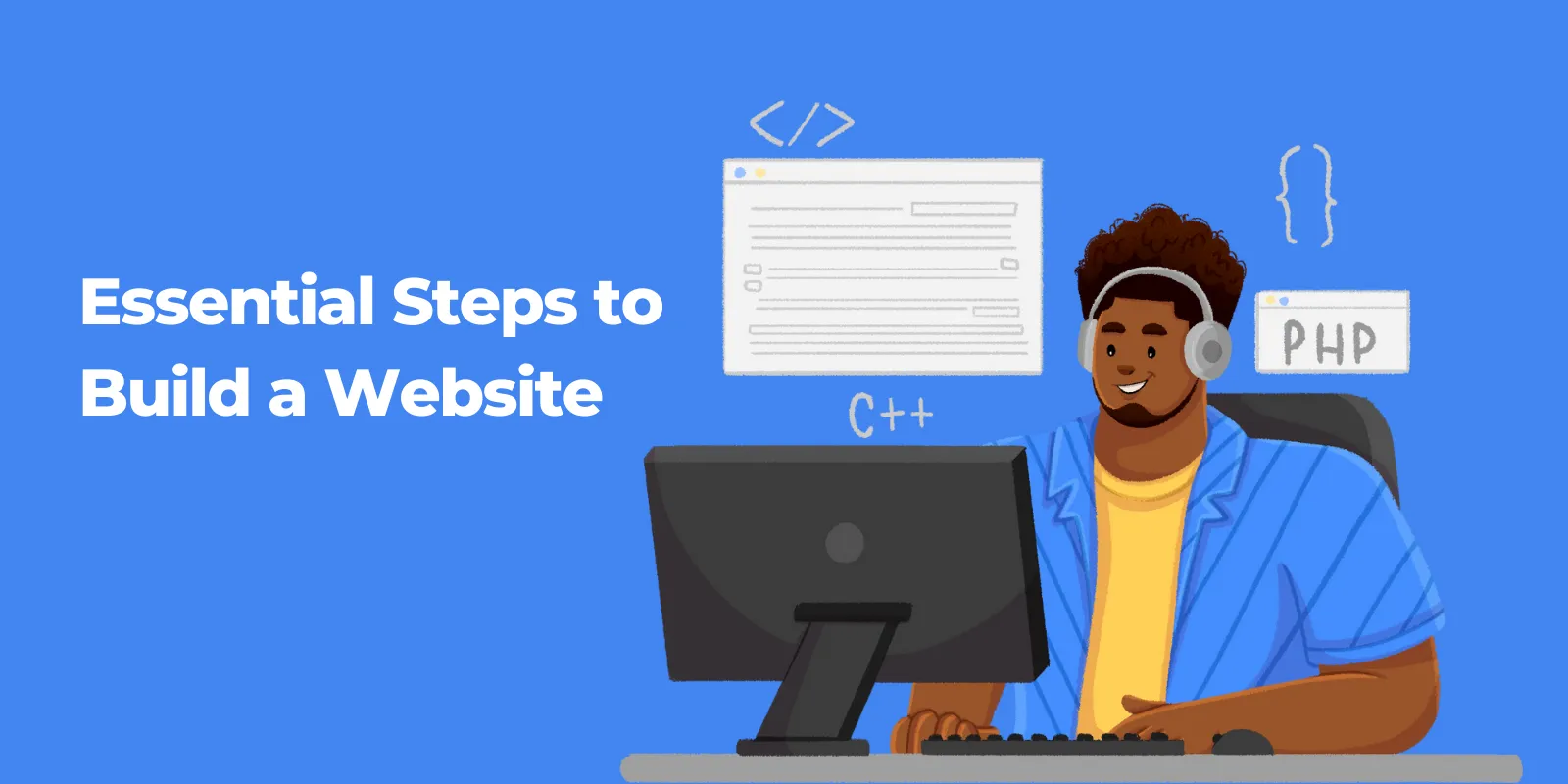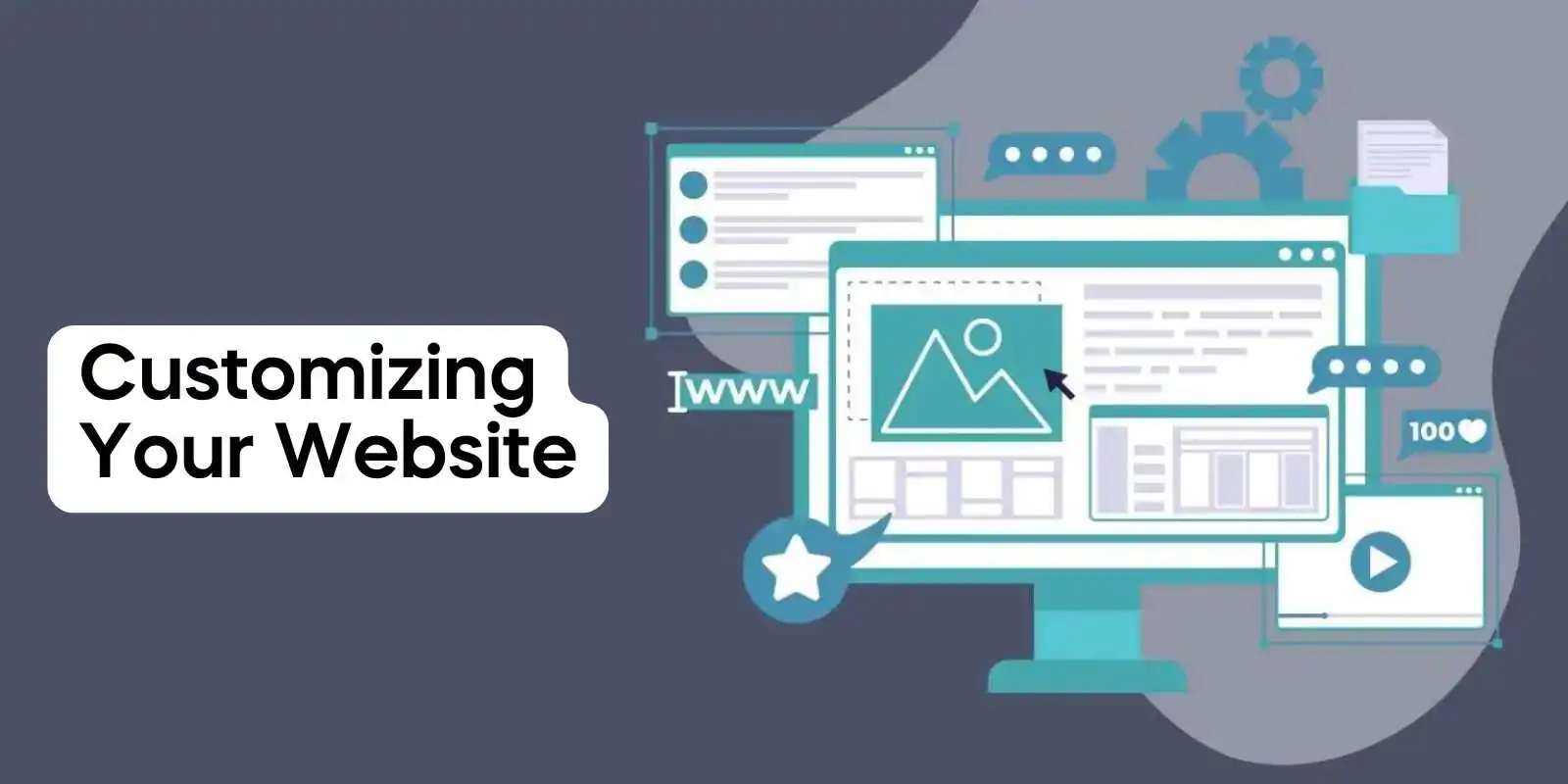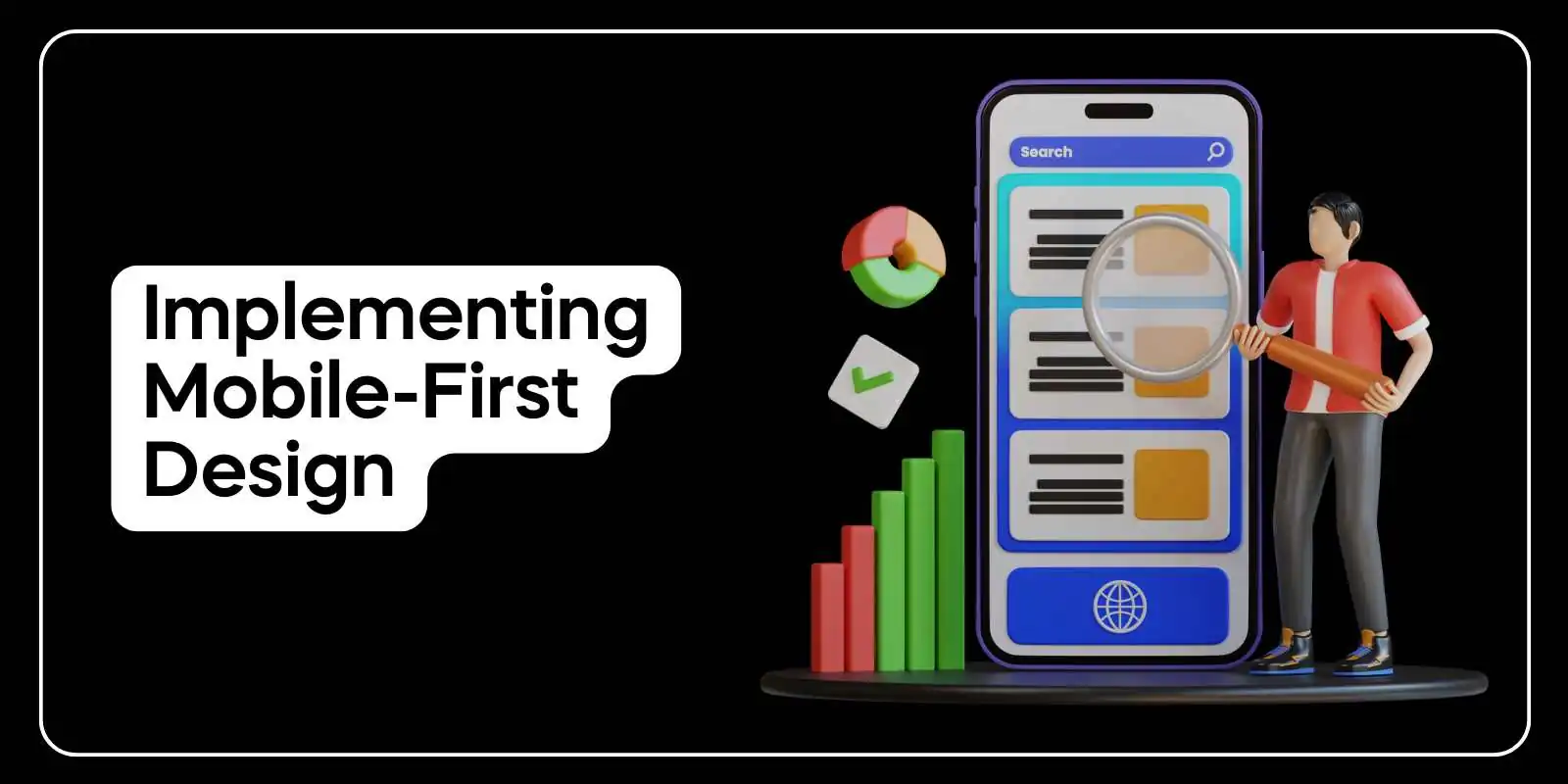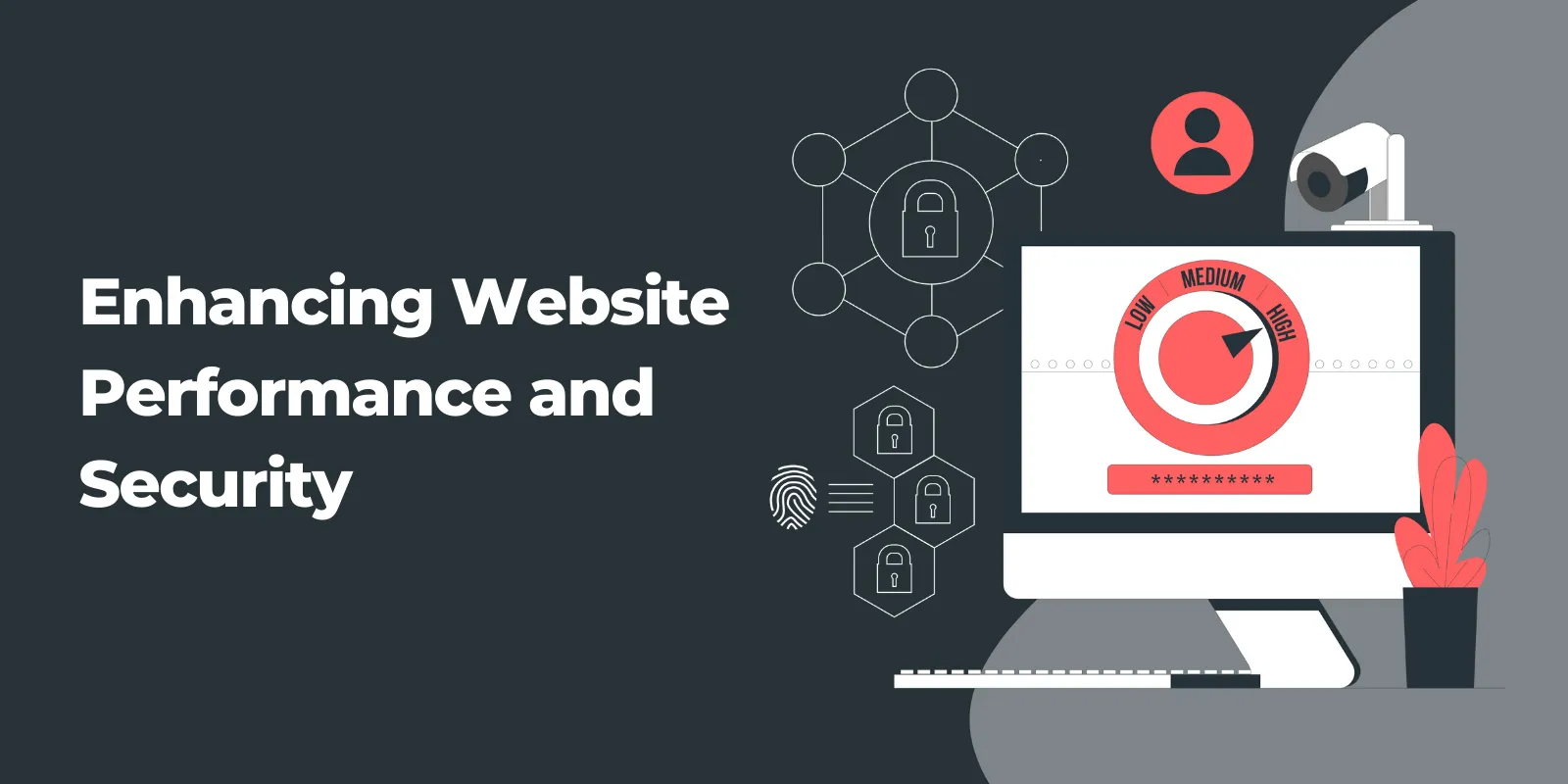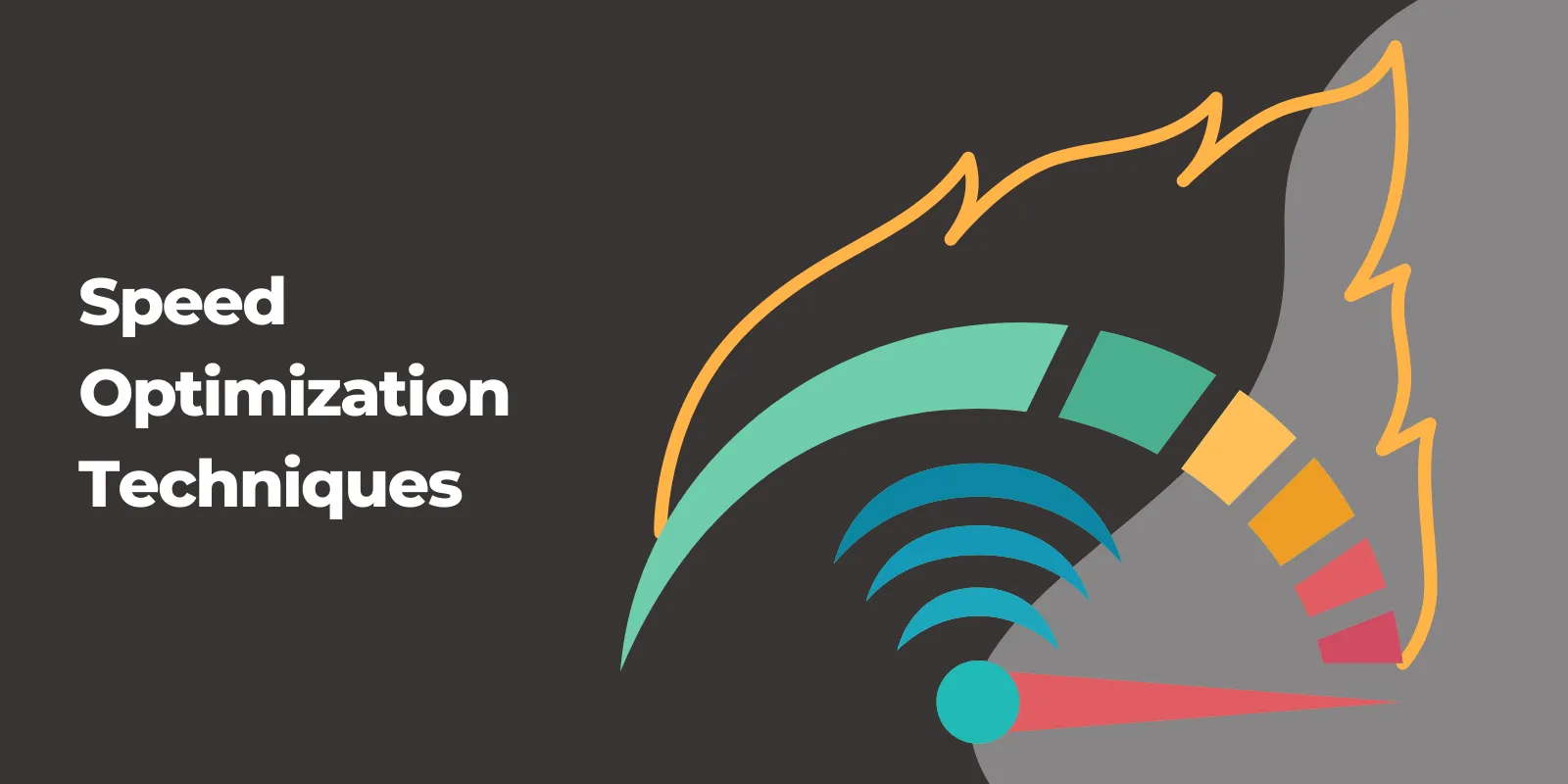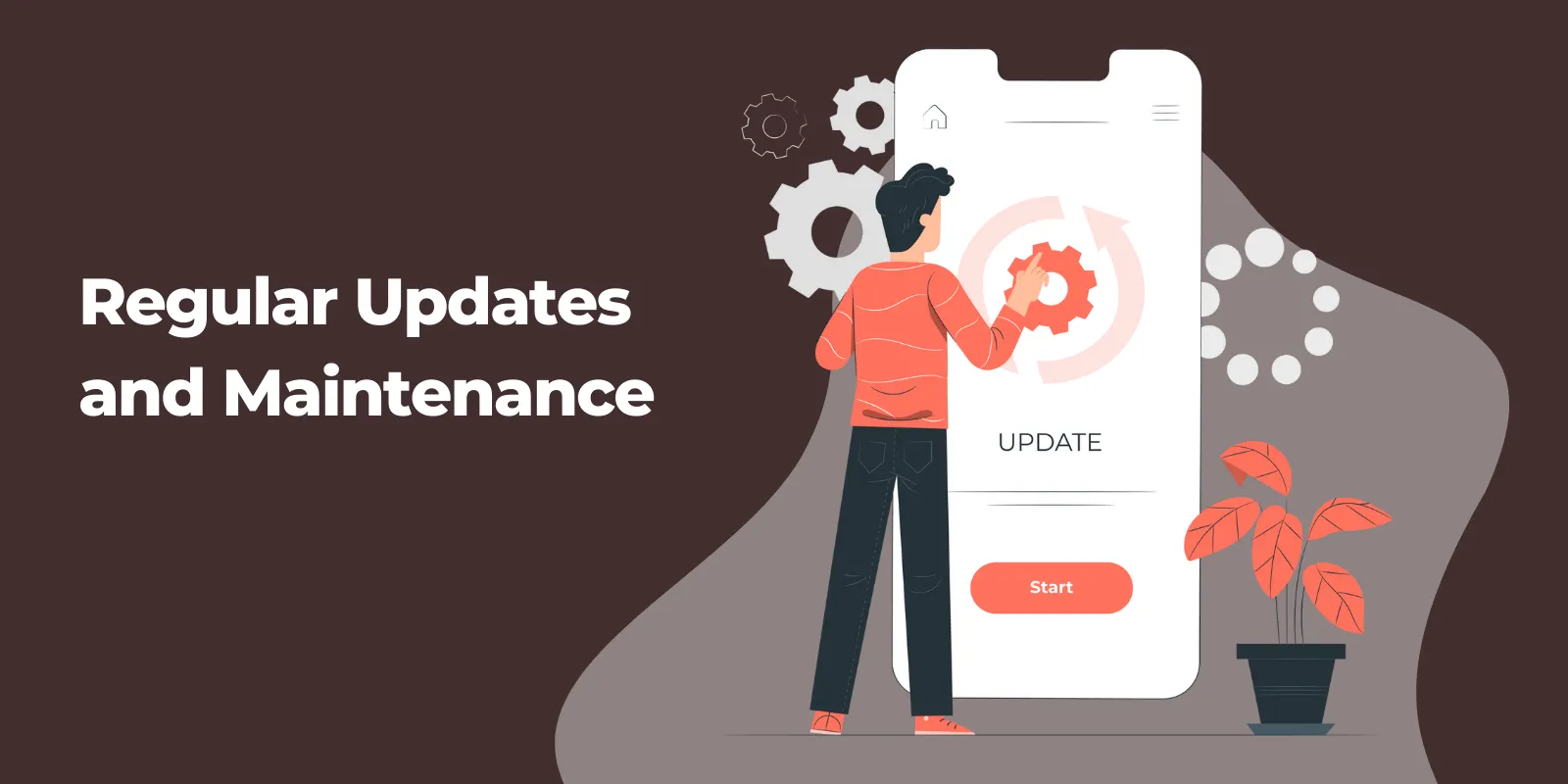As the internet becomes an increasingly essential part of our lives, it’s more important than ever to have a strong online presence.
This comprehensive guide will walk you through the entire process of building a website from scratch, ensuring that your site is not only visually appealing but also optimized for performance, security, and search engine rankings. Ready to dive in and create a stunning website tailored to your needs?
Let’s get started!
Understanding the Website Creation Process
The website creation process is brimming with exciting opportunities thanks to technological advancements, user expectations, and industry trends.
From powerful web development tools like NetBeans and Aptana Studio to versatile website builders such as Wix and uKit, there are plenty of options available to create a website that meets your unique requirements.
However, building a successful website isn’t just about choosing the best website builders and the right tools. It’s crucial to understand your site’s purpose, target audience, and the strategies needed to reach them effectively.
By harnessing the power of search engines, optimizing for mobile devices, and leveraging the latest AI and chatbot technologies, you can create a website that not only looks great but also delivers a seamless user experience for your visitors.
And with the help of platforms like WordPress and other content management systems, even those with limited technical skills can create a professional-looking website with ease.
Essential Steps to Build a Website
Before you can embark on your website-building journey, it’s essential to understand the key steps involved in the website building process.
From choosing a memorable domain name to selecting a platform or CMS, picking the right web hosting service, and designing your site, each step plays a crucial role in the overall success of your website.
By carefully considering these elements and tailoring them to your specific needs, you can create a website that not only looks fantastic, but also performs seamlessly for your visitors.
In this section, we’ll dive deeper into each of these essential steps to make a website, providing you with valuable insights and actionable tips to help you build a website that truly stands out.
Whether you’re a seasoned web developer and designer or a complete beginner, these guidelines will ensure that your website is optimized for performance, security, and user experience, setting you on the path to online success.
Choosing a Domain Name
Your domain name is the virtual address where your website lives on the internet. It’s the first thing visitors see when they visit your site, and it plays a vital role in shaping their perception of your brand.
A memorable domain name not only helps boost your organic traffic, but also establishes trust and credibility with your audience.
When selecting a domain name, keep in mind that it should be easy to remember and spell for maximum memorability.
Avoid using numbers and hyphens, as they can make your domain name harder to remember and type. Choose a custom domain name that’s both unique and memorable to make a lasting impression.
Once you have decided on a custom domain name, you can register it with a reliable domain registrar like Domain.com or directly through your hosting provider.
Selecting a Platform or CMS
Content management systems (CMS) and website builders are two of the most effective tools for building a website. Both offer great opportunities to create a great online presence.
The right choice depends on your website’s purpose, your technical expertise, and the level of customization you require.
For those with limited technical skills, most website builders, like Wix and Squarespace offer user-friendly interfaces and a wide array of templates to choose from.
On the other hand, platforms like WordPress provide more control over design and content, making them a popular choice for businesses, eCommerce stores, and blogs.
When selecting a platform or CMS, it’s essential to consider your website’s purpose and your target audience.
For example, if you’re creating a personal blog, a platform like WordPress may be the best choice due to its extensive range of blogging features. If you’re building an online store, a platform like Shopify may be more suitable due to its robust eCommerce tools.
By understanding your website’s goals and choosing a website building platform that aligns with those objectives, you can ensure that your site is optimized for success.
Picking Web Hosting
Web hosting services play a crucial role in making your website accessible to the world. They store your website’s files and data on servers, allowing users to access your site via the internet.
When choosing a web hosting company or service, it’s important to consider factors such as reliability, performance, and security, as these can directly impact your website’s success.
There are several types of web hosting services available, such as shared hosting, virtual private server (VPS) hosting, and dedicated hosting. Each type offers its own set of features and benefits, so it’s essential to choose the one that best suits your needs.
For example, shared hosting is often the most affordable option and is suitable for small websites and blogs, while VPS hosting offers greater scalability and is ideal for growing businesses.
By selecting a web hosting package and the right web hosting plan, you can ensure that your website loads quickly and remains secure, providing a seamless user experience for your visitors.
Designing the Site
Designing your website is one of the most exciting steps in the website creation process. This is where you get to bring your vision to life, choosing colors, fonts, and layouts that reflect your brand’s personality and resonate with your target audience.
A well-designed website not only looks visually appealing but also provides a user-friendly experience, ensuring that visitors can easily navigate your site and find the information they need.
When designing your site, it’s essential to prioritize responsive design, ensuring that your website displays correctly on all devices, including mobile phones and tablets.
Additionally, focus on creating user-friendly navigation, making it easy for visitors to move between pages and access important information quickly.
Incorporating visually appealing layouts and engaging content on blog pages can also help to keep your visitors engaged, increasing the likelihood that they will stay on your blog page or site longer and engage with your brand.
Customizing Your Website
As technology continues to evolve, it’s essential to stay up-to-date with the latest design trends and features to ensure that your website remains modern and relevant.
By staying ahead of the curve, you can create a website that not only meets the needs of your audience, but also stands out from the competition.
In this section, we’ll explore some of the most exciting design trends and features that are set to dominate, including mobile-first design, AI and chatbots, and social media integration.

Award-Winning
Sales Funnel & Website Expert
Ready for Revenue – Not Just “Traffic”?
- Websites that Work: Clean, fast, built to convert – no design fluff.
- Funnels that Sell for You: Step-by-step paths that turn clicks into paying customers.
- SEO That Hunts Buyers: Show up exactly when prospects reach for their wallets.
By incorporating these cutting-edge elements into your website, you can ensure that your site remains fresh and engaging, helping you attract more visitors and drive business growth.
Implementing Mobile-First Design
With the increasing use of mobile devices for browsing the internet, it’s more important than ever to ensure that your website is optimized for mobile viewing. Mobile-first design prioritizes the mobile user experience, ensuring that your website looks great and functions seamlessly on smartphones and tablets.
To implement mobile-first design, focus on creating responsive layouts that adapt to different screen sizes and resolutions, ensuring that your content is easily accessible and readable on all devices.
Additionally, consider using mobile-specific features to customize web pages, such as touch-friendly buttons and navigation menus to enhance the mobile user experience.
By prioritizing mobile-first design, you can cater to the growing number of mobile users and ensure that your website remains competitive in the digital landscape.
Utilizing AI and Chatbots
Artificial intelligence (AI) and chatbots have become increasingly popular in recent years, offering a range of benefits for website creators.
These advanced technologies can help automate customer support, provide personalized responses to user queries, and enhance the overall user experience, all without requiring additional human effort.
By integrating AI and chatbots into your website design, you can improve efficiencies, enhance customer service, and reduce costs.
To ensure the success of your AI and chatbot implementation, it’s important to employ natural language processing to understand user queries, provide personalized responses, and leverage machine learning to refine the accuracy of the chatbot over time.
By staying ahead of the curve and incorporating AI and chatbots into your website design, you can create a truly innovative and engaging online experience for your visitors.
Integrating Social Media and Content Marketing
In today’s digital age, social media and content marketing play a crucial role in driving traffic and engagement to your website.
By creating engaging content and promoting it on social media platforms, you can reach a wider audience, build brand awareness, and foster relationships with potential customers.
To successfully integrate your social media accounts and content marketing into your website, focus on crafting content that speaks to your target audience and promotes your brand’s unique selling points.
Additionally, optimize your content for search engines, ensuring that it ranks highly in search results and attracts organic traffic.
Finally, actively promote your content on social media platforms, engaging with your audience and encouraging them to share your content with their networks.
By combining social media and content marketing strategies, you can drive traffic to your website and grow your online presence.
Enhancing Website Performance and Security
A successful website not only looks great and offers valuable content, but also performs seamlessly and remains secure from potential threats.
By prioritizing website performance and security, you can ensure that your visitors have a positive experience on your site and are more likely to return in the future.
In this section, we’ll explore essential aspects of website performance and security, including speed optimization, SSL certificates, and regular updates.
By implementing these strategies, you can enhance your website’s performance, protect your visitors’ data, and maintain a strong online presence.
Speed Optimization Techniques
Website loading speed is a critical factor in user experience, search engine rankings, and conversion rates. A fast-loading website not only provides a better user experience, but also helps create a positive impression among customers.
To improve your website’s loading speed and overall performance, there are several techniques you can employ.
Optimizing images by compressing them and using appropriate file formats can significantly reduce loading times. Additionally, minifying HTML, CSS, and JavaScript, and using a content delivery network (CDN) can help improve website loading speed.
By prioritizing speed optimization, you can enhance your website’s performance and provide a seamless user experience for your visitors.
Securing Your Website with SSL Certificates
SSL (Secure Sockets Layer) certificates are an essential component of website security, providing an extra layer of protection for your visitors’ data.
They encrypt data in transit between the server and the browser, ensuring that sensitive information remains secure and confidential.
To obtain an SSL certificate, you can apply to a Certificate Authority (CA), which will verify your domain and provide you with the certificate.
Once you have the certificate, you can install it on your web server to secure your website’s connection.
By incorporating SSL certificates into your website design, you can enhance your site’s security and gain your visitors’ trust.
Regular Updates and Maintenance
Regular updates and maintenance are essential for keeping your website secure and functioning optimally.
By ensuring that your software is always up-to-date, you can protect your site from potential security threats and maintain a strong online presence.
Some best practices for regular updates and maintenance include checking for software updates, running security scans, updating content, and optimizing website performance.
Additionally, you can set up automated updates and schedule regular maintenance checks to ensure that your website remains secure and up-to-date.
By prioritizing regular updates and maintenance, you can keep your website running smoothly and provide a seamless user experience for your visitors.
Promoting Your Website and Growing Traffic
Once you’ve created your website, it’s essential to promote it effectively to attract visitors and grow your online presence.
By employing a combination of search engine optimization (SEO), content marketing, and social media promotion, you can drive targeted traffic to your site and increase engagement with your brand.
In this section, we’ll share some effective strategies for promoting your website, increasing organic traffic, and improving search engine rankings.
By implementing these tactics, you can not only attract more visitors to your site, but also ensure that they engage with your content and become loyal customers.
SEO Best Practices
Search engine optimization (SEO) is the process of optimizing your website to rank higher in search engine results pages (SERPs) for relevant search terms.
By improving your website’s visibility in search engines, you can attract more organic traffic and increase the likelihood of converting visitors into customers.
To optimize your website for SEO, focus on creating high-quality, relevant content that addresses the needs and interests of your target audience.
Additionally, optimize page titles and meta descriptions, use strategic keywords throughout your content, and ensure that your site is mobile-friendly and loads quickly.
By implementing these SEO best practices, you can improve your website’s visibility in search engines and attract more targeted traffic.
Content Marketing Strategies
Content marketing is the process of creating and sharing valuable content to attract and engage your target audience, promote brand awareness, and establish your business as an industry expert.
By focusing on providing valuable information that addresses the needs and interests of your audience, you can build trust and credibility while encouraging potential customers to take action.
Some effective content marketing strategies include blogging, guest posting, and social media sharing. By creating high-quality content and promoting it on relevant platforms, you can attract more visitors to your site, increase engagement with your brand, and ultimately, drive more sales and conversions.
Don’t forget to measure the success of your content marketing efforts using analytics tools, as this can provide valuable insights into your progress and help you refine your strategies for maximum success.
Utilizing Analytics and Tracking Tools
Analytics and tracking tools, like Google Analytics, are essential for monitoring your website’s performance, identifying areas for improvement, and making data-driven decisions.
These tools provide invaluable insights into website traffic, user behavior, and content performance, allowing you to optimize your site for better user experience and search engine rankings.
To maximize the effectiveness of your analytics and tracking tools, set up goals and track metrics, segment data, and test different versions of content.
Additionally, ensure that your tools are properly configured and regularly updated for optimal performance.
By leveraging analytics and tracking tools, you can make informed decisions about your website’s design, content, and promotion strategies, ensuring that you stay ahead of the competition and achieve your online goals.
Frequently Asked Questions
How much does it cost to pay someone to build a website?
The cost of paying someone to build a website can vary greatly depending on several factors, including the complexity of the site, the expertise of the developer or agency, the technologies used, and the timeline.
You might expect to pay anywhere from a few hundred dollars for a basic, templated site to tens of thousands of dollars for a complex, custom-built site. Some agencies or freelancers may charge an hourly rate, while others might offer a flat fee for the entire project.
Can I build a website for free?
Yes, it’s possible to build a website for free using various online platforms, such as WordPress.com, Wix, or Weebly. These platforms offer free plans and provide easy-to-use, drag-and-drop website builders that don’t require any coding knowledge.
However, free plans usually come with limitations such as advertising on your site, restricted functionality, or a domain name tied to the platform (e.g., yourwebsite.wordpress.com). Upgrading to a paid plan will give you more features, remove ads, and allow you to use a custom domain name (e.g., www.yourwebsite.com).
How do I build my own website?
Building your own website generally involves the following steps:
- Plan Your Website: Decide what type of website you want, who your audience is, and what features you need.
- Choose a Domain Name: Your domain name is your website’s address on the internet (e.g., www.yourwebsite.com). You’ll need to check the availability of your desired domain name and register it.
- Choose a Website Building Platform: There are many platforms available that make it easy to build a website without any coding knowledge, such as WordPress, Wix, or Squarespace.
- Choose a Hosting Provider: If you’re using a self-hosted platform like WordPress.org, you’ll need a hosting provider. This is a company that stores your website’s files and makes them accessible on the internet.
- Design and Build Your Website: Use your chosen platform’s website builder to design your website and add content. You’ll also want to optimize your site for search engines, which is known as SEO.
- Publish and Promote Your Website: Once your website is ready, publish it to the internet. You can then promote your website through social media, email marketing, SEO, and other marketing strategies.
What do you need to start building a website?
To start building a website, you’ll need:
- A clear purpose and plan for your website
- A domain name
- A website building platform
- A hosting provider (if using a self-hosted platform)
- Content for your website, including text, images, and possibly video
- A basic understanding of SEO to help people find your site
You may also want to consider how you’ll promote your website once it’s live, such as through social media or email marketing.
How much money is it to start a website?
The cost to start a website can vary widely depending on your needs and choices. Here are some potential costs:
- Domain Name: Typically around $10-$15 per year, though premium domains can cost more.
- Hosting: Anywhere from a few dollars per month for basic shared hosting to several hundred dollars per month for dedicated or managed hosting.
- Website Builder: Free if you use a platform with a free plan, though these often have limitations. Paid plans can range from a few dollars per month to over $50 per month.
Conclusion
In conclusion, building a website can be an exciting and rewarding experience, allowing you to create a powerful online presence that caters to the needs of your target audience.
By following the steps outlined in this guide, you can create a website that not only looks fantastic, but also performs seamlessly, remains secure, and attracts the right visitors.
Remember to stay up-to-date with the latest design trends and features, ensuring that your website remains modern and relevant in an ever-evolving digital landscape.
With the right combination of effective promotion strategies, regular updates, and performance optimization, you can build a successful website that drives traffic, engages visitors, and helps your business grow.
Now that you’re equipped with the knowledge and tools necessary to create a stunning personal website, it’s time to put your skills to the test and embark on your website-building journey.
So, what are you waiting for?
Dive in, get creative, and watch your online presence flourish!
